The destructive force of water is known to everyone. Water can even find the slightest slit and leaving anywhere. That's just there are places where it is not desirable. The bathroom should be a sample of sanitation and the ideal state of walls and floor.
Excessive humidity can adversely affect the bathroom, and one of the most "cunning" places is a gap between the bathroom and the wall, which may appear as a result of various reasons: the irregularities of the walls, the irregularity of the bath itself.
After the shower, even through the tiny gap, water spill on the floor, and it is not always possible to dry it in such a hard to reach place. And this in turn threatens very unpleasant things, ranging from mold and harmful fungus and ending with the appearance of completely unborn guests - wets. Not to mention the fact that water can leak and spoil your neighbors to repair, and you have a relationship with neighbors.
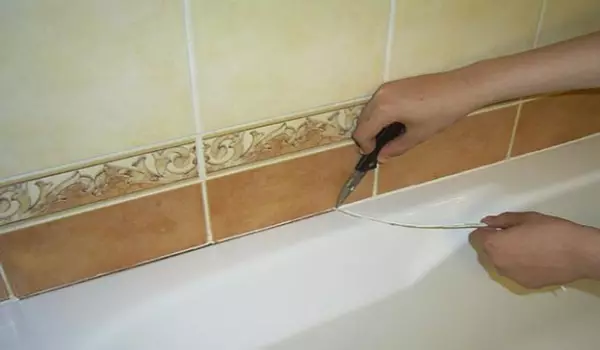
As you can see, the lack seems to be tiny, and the problems from it are huge, so the gap between the bathroom and the wall must be embossed, the benefit of the ways to get rid of it quite a lot, and they are not difficult even for non-professionals. How exactly to exclude this problem?
Options Seeling joints
Earlier in Soviet times, cement mortar was the most popular materials to eliminate inconvenience. They applied such a solution with a large thick layer, and after the external beauty was painted enamel.
Modern time gives much more ways to "sewing" the joint, while the methods are much more comfortable and aesthetically attractive. In this article we will consider the most popular seams of seams available to everyone.
Article on the topic: Paint for concrete floor: Sexal forces for concrete, acrylic and epoxy enamel, latex industrial
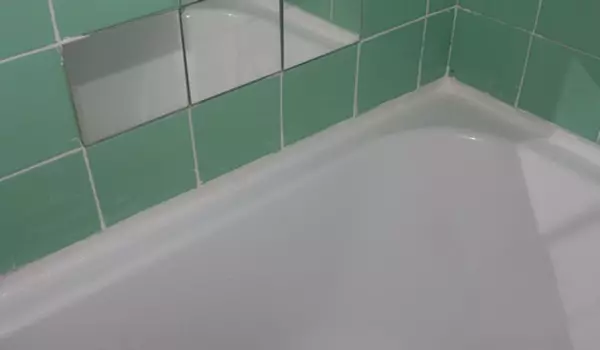
The main rule that concerns all methods of embelling the gap between the bathroom and the wall is the purity of the working surface. Before any sealing, it is necessary to clean well cleaned all the surfaces of the clutch in order for the fastening to be good.
Instructions for sealing
Sealant
Silicone-based sealant is one of the most reliable shocking methods between the wall and the bathroom. Due to its airiness and consistency, the sealant tightly clogs all the gap, not leaving the slightest loopholes for water. When frozen, the sealant acquires good strength, while not losing its elasticity, like solid rubber.
Thus, the sealant has excellent contact, excluding any possibility of water flow. It is also worth noting that the width of the gap, which can be sealing with such a sealant can be quite large (2-3 cm). The applied layer should be thick. The thicker layer, the more reliable the protection against water flow.
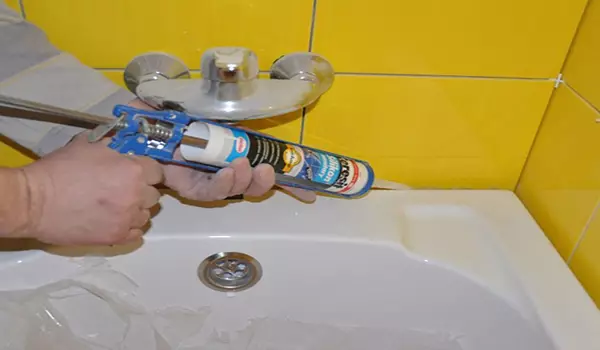
Before applying sealant must prepare work surfaces. As mentioned above, they must be clean, as well as absolutely dry. If the gaps are deep, then before applying the sealant, it is necessary to fill the hollow space by mounting foam, and then apply a sealant.
Smooth and accurate borders of applying sealant are achieved with the help of special painting tape, which can be purchased in building materials stores.
It is also important to remember that the bathroom is a necessary special sealant. The use of universal sealant, due to the constant high humidity reigning in this room, will lead to its yellowness. Do not leave the bathroom closed after processing sealant gap between the bathroom and the wall. When drying, the sealant highlights certain pairs that should weathered.
Border
The next method of gluing the joint between the wall and the bathroom is the border. The back of the border can be called his designer limitations. As a rule, the main materials for borders are ceramics, granite and marble. There are also borders and corners from plastics, and have also managed to gain popularity in the finish.
Article on the topic: Bedroom for a girl: design and design ideas (41 photos)
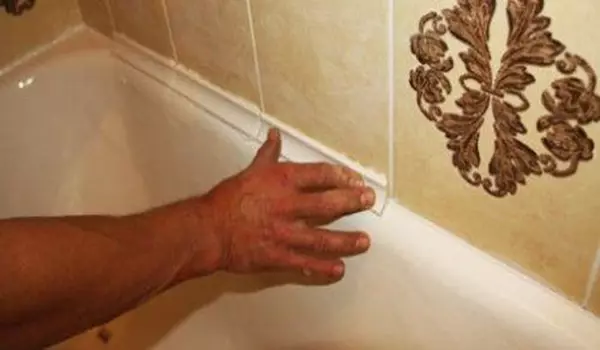
Borders are installed on the gaps already sealed with sealant. The latter will provide a smoother surface for better contact. The border is attached not when, the sealant is already high, and immediately after applying a sealing material.
This will increase the reliability of the border fastening and reduce the ability to check. If you have chosen borders from plastics for your bathroom, then for fastening the best option will be the use of liquid nails.
Borders perfectly complement the design of the bathroom, and look aesthetically beautiful. Therefore, they are so popular when finishing a bathroom.
Burgundy ribbon.
Border tape is the easiest and easiest way to protect yourself from water leaks. The width of the border ribbon is different, because the slots between the bathroom and the wall can also be of different widths and it is important to pick up this that is suitable for your case.
However, this method has one minus. Considering how easy it is and just a tape is glued, you should expect that it is not the most durable material. When sticking a ribbon, it is important to act gently and clearly stick to the instructions specified on the package.
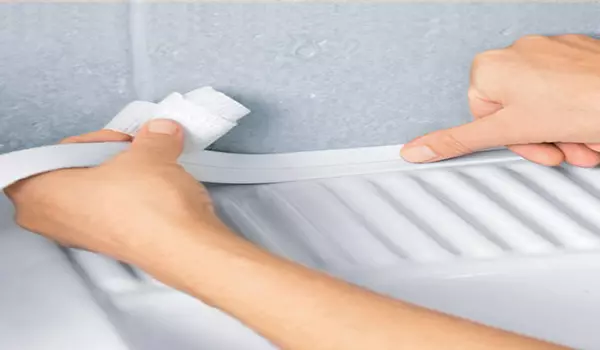
For the best reliability of "setting", it is best to stick a tape on a non-dried sealant. Best of all, immediately after applying the sealing material, gently glue a border ribbon. The accuracy of the result is provided by painting tape.
Put
It happens that the gap between the bathroom and the wall is very small, not more than 5 mm, and then such a method as a grout comes to the rescue. A special snow-white grout with which you can level the gap and eliminate the appearance of water under the bathroom.However, if the interior of your bathroom is made in bright and juicy colors, then the snow-white grout will not look aesthetically. This is the only drawback of the method, because otherwise it justifies all the expectations.
It remains snow-white for a long time despite the humidity and reliably protects from the water. Special feet-glitter applied to the grout protects the surface from the appearance of dirt, rust and fungus.
Article on the topic: Antiseptic impregnation for wood with their own hands
Combined method
Finally, the last of the most popular ways is combined. How can it be understood from the name this combination of the above methods to close the seam between the wall and the bathroom, even more enhancing the guarantee from unwanted humidity.
Initially, the sealing of the space between the wall and the bathroom is necessary. For this, the hole close the mounting foam and carefully cut up too much. After that, the sealant itself is applied, and after he dries up sticking the polishesone ribbon.
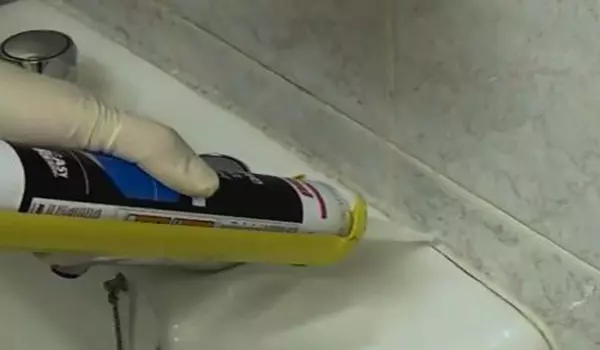
As we see ways to avoid moisture under the bathroom a lot, and for each owner or the hostess there is an acceptable and optimal one. At the same time, it will not even be necessary to seek help to professionals that the family budget will save. Live with comfort!
Video "How to close the seam between the bathroom and the wall"
Video with a demonstration of how to close the seam between the bathroom and the wall using silicone sealant.
